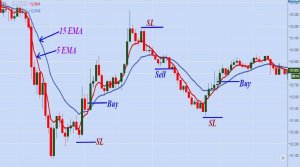The 10,000 Hour Rule became popular after author Malcolm Gladwell dedicated a chapter to the concept in his book Outliers. The book can be summarized as a piece that examines the nature of trading success by evaluating different success stories and looking at separate case studies that back up some of those findings. In the chapter that focuses on the 10,000-hour rule, Gladwell claims that he has discovered “the magic numbers for greatness”: 20 hours of guided practice per week, 50 weeks per year, for 10 years, which equals 10,000 hours in total. According to the book, achieving this would put the person on the same level of greatness as a professional trader.
Of course, any trader that sets out to meet this goal would have to be highly ambitious. This might not be possible for every forex trader, as many can only afford to trade part-time or might use a strategy like swing trading that doesn’t require as much attention as a more hands-on technique. One of the main benefits to forex trading involves the flexibility of hours since traders can decide when and how they want to trade. You would have to really work the 20 hours a week into your schedule if you wanted to meet the hours outlined by Gladwell’s plan. This would also only leave 2 weeks off per year, where some jobs provide their workers with 3 or 4 weeks. For traders that exclusively work from home, this is possible, but those with less flexible schedules just might not have the time.
The plus to following the plan is that it would expose you to many different types of markets, thus building you into a more knowledgeable trader. For example, if you had started in 2010, you would have traded during both the U.S. and European financial crises, Japan’s nuclear meltdown, and during the plunge in oil prices. If you started on the plan today, you would likely see many other world events during the 10 years that are required to complete the plan. Learning to trade in different environments certainly could help one to learn how to deal with different markets and what does or doesn’t work with their strategy.
Our final opinion is that Gladwell’s 10,000-hour rule is better viewed as a rough estimate of the amount of time you should pour into trading. If you can only dedicate 15 hours a week and you’d like to take three or four weeks off each year instead of two, there’s no reason why this would stop you from becoming a professional trader. Even with less time put in, if you traded over the 10-year period, you would still be exposed to different events and would reap most of the benefits outlined in the plan. Keep in mind that there isn’t really a magic answer for the amount of time one needs to spend trading, but the 10,000-hour rule does provide a good guide of the time that is needed to master the skill of trading.





